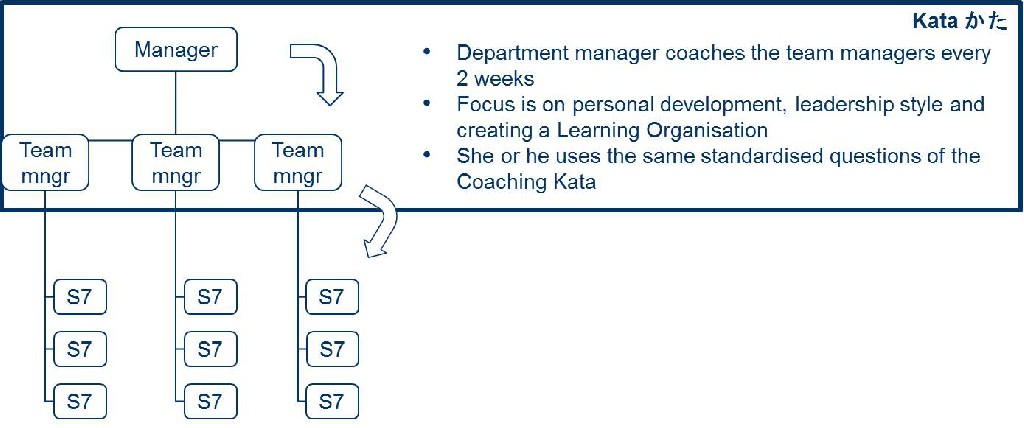Improvement Kata for Agile teams, Agile Squads, Scrum teams or Super7 teams: the Improvement Kata is an excellent tool for all forms of autonomous teams.
Agile teams can use Improvement Kata in their start-up phase, to quickly get to the next step of team maturity. They can use the improvement kata to solve issues, impediments and problems.
Improvement Kata is also an excellent method for their support staff: Agile coaches, Scrum masters, Lean coaches and Lean Six Sigma Blackbelts.
Similar to how Agile develops, Kata improves in small steps and doesn’t plan the whole path to the desired improvement. The desired end state or ‘definition of awesome’ is known. But only the first achievable target condition is determined in advance. No further milestones.
Additional to how Agile develops, Kata Improvement put even more emphasis on learning. An experiment may fail, as long as the team has learned from it. Agile does this to some extent, by working on minimal viable products that can be tested in practice. The experiments in the Improvement Kata are even more frequent. Many small experiments ensure continuous learning and continuous improvement.
How does Improvement Kata for Agile work?
Traditional improvement is project based – see figure 1.

figure 1 – the old way of improving
The Improvement Kata doesn’t plan the whole route: only the next target condition is clearly defined. See figure 2.

Figure 2 – the Improvement Kata
The Improvement Kata doesn’t tell you how to get to the next target condition, let alone how to get to your desired situation. It doesn’t tell you which steps to take to reach this year’s target. The Improvement Kata lets you discover the route as you go. See figure 3.

Figure 3 – finding the path to improvement
More theory and examples of Kata coaching can be found on www.lean.org/kata or in books and you-tube posts of Mike Rother.
The improvement Kata shows strong similarities to Agile and Scrum. This makes it the best improvement and problem solving method for Agile teams, Squads, Tribes, Scrum Teams. And it has proven itself for Super7 teams, also. It’s the best way to get to a true learning organization and continuous improvement. This enables you to cope with the ever changing demands of customers and regulators, especially in the current market for Financial Services.
Menno R. van Dijk.













